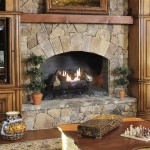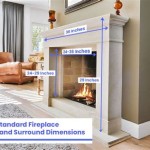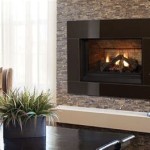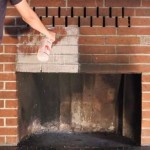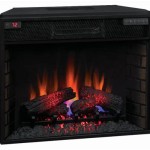Fireplace Mantels and TV Placement Above: A Comprehensive Guide
The integration of a television above a fireplace mantel has become a commonplace design choice in contemporary homes. This arrangement, when executed properly, can create a visually appealing focal point and optimize space. However, the decision to combine these elements requires careful consideration of several factors, including aesthetics, ergonomics, safety, and technological compatibility. This article provides a detailed examination of the considerations necessary for successfully incorporating a television above a fireplace mantel.
Aesthetic Considerations
The visual harmony of a fireplace mantel and a television relies heavily on proportion, balance, and style consistency. The size of the television should be in proportion to the size of the fireplace and the overall dimensions of the room. A disproportionately large television can overwhelm the fireplace, while a small television may appear insignificant. Generally, the television's width should not exceed the width of the fireplace mantel, although this is a guideline and not a strict rule.
The style of the mantel and the television should complement each other. A modern, minimalist fireplace may pair well with a sleek, frameless television, while a more traditional, ornate fireplace might benefit from a television with a decorative frame or be surrounded by custom cabinetry that echoes the fireplace's design elements. The color palette of the mantel, the surrounding wall, and the television should also be coordinated to create a cohesive and visually appealing design.
Concealing the television's wiring is crucial for maintaining a clean and polished look. Options include running the cables through the wall, using cable management systems, or incorporating hidden compartments within the mantel or surrounding cabinetry. Minimizing visible wires reduces visual clutter and enhances the overall aesthetic appeal of the arrangement. The arrangement of decorative items on the mantel should also be carefully considered. Too many items can distract from the television, while too few may make the area appear bare. A balanced approach, using items of varying heights and textures, can create visual interest without overwhelming the space.
Ergonomic and Viewing Angle Considerations
The primary ergonomic concern when placing a television above a fireplace is the viewing angle. Positioning the television too high can lead to neck strain and discomfort, especially during extended viewing sessions. The ideal viewing angle is generally considered to be when the center of the screen is at or slightly below eye level when seated. The height of the mantel directly impacts the viewing angle, making it a critical factor in the overall comfort and usability of the setup.
Several strategies can mitigate potential ergonomic issues. One option is to use a tilting television mount, which allows the screen to be angled downward, improving the viewing angle and reducing neck strain. Another approach is to lower the height of the mantel itself, if possible. If a high mantel is unavoidable, consider using seating that is slightly reclined or has adjustable headrests to improve viewing comfort. The distance between the seating area and the television also plays a role in determining the optimal viewing angle. The farther the seating is from the television, the less severe the angle becomes. However, excessively far distances can make it difficult to see details on the screen.
Careful calculation of the viewing angle is essential. One can measure the distance from the floor to the viewer's eye level when seated, then compare this measurement to the height of the television screen's center point relative to the floor. The difference between these two measurements will determine the angle of elevation. Online calculators and ergonomic guides can assist in determining the optimal viewing angle based on these measurements. Also, consider future needs. Will children be frequently watching the television? Their lower eye-level would need to be taken into consideration, perhaps with a mount that can be adjusted.
Safety and Heat Management Considerations
Placing a television above a fireplace introduces potential safety concerns related to heat exposure. The heat generated by a functioning fireplace can damage the internal components of the television, potentially leading to premature failure or even a fire hazard. The intensity of the heat reaching the television depends on several factors, including the type of fireplace (wood-burning, gas, or electric), the height of the mantel, and the insulation of the surrounding wall. Wood-burning fireplaces generally produce the most heat, followed by gas fireplaces, while electric fireplaces typically generate the least.
Proper heat management is crucial for protecting the television. The mantel itself acts as a barrier, deflecting heat away from the television. A deeper mantel provides greater protection than a shallow one. Installing a heat shield above the fireplace opening can further reduce the amount of heat reaching the television. This shield can be made of metal or other heat-resistant materials and should be positioned to effectively deflect rising heat. Adequate ventilation is also essential. Ensuring that there is sufficient airflow around the television can help to dissipate heat and prevent it from building up. Leave space behind the television and consider installing vents in the surrounding wall or cabinetry to promote air circulation.
Choosing the right type of fireplace can also impact heat management. Electric fireplaces, which produce heat through electrical resistance, are generally the safest option for placing a television above them. They generate less heat than wood-burning or gas fireplaces and often include features to direct heat forward rather than upward. Regular maintenance of the fireplace is also important. Ensuring that the fireplace is properly ventilated and that the chimney or flue is clear of obstructions can help to prevent excessive heat buildup. Monitor the temperature around the television while the fireplace is in use. If the area feels excessively hot, consider adjusting the fireplace's settings or temporarily removing the television.
Technological Considerations and Installation
Beyond aesthetics and safety, technological compatibility and proper installation are vital for a successful television-above-fireplace setup. The location of electrical outlets and cable connections needs to be considered early in the planning process. It is generally advisable to run electrical and data cables behind the wall to create a clean and uncluttered appearance. This requires planning and potentially the services of a qualified electrician or installer.
The choice of television mount is also crucial. A sturdy and reliable mount is essential for safely securing the television to the wall above the fireplace. There are various types of mounts available, including fixed mounts, tilting mounts, and full-motion mounts. Fixed mounts hold the television flush against the wall, providing a sleek and minimalist look. Tilting mounts allow the screen to be angled downward, improving the viewing angle. Full-motion mounts offer the greatest flexibility, allowing the television to be swiveled and tilted in multiple directions. When selecting a mount, it is important to consider the weight and size of the television, as well as the type of wall construction.
Professional installation is often recommended, especially if electrical work or wall modifications are required. A qualified installer can ensure that the television is securely mounted, that the wiring is properly concealed, and that all safety precautions are taken. If attempting a DIY installation, it is essential to carefully follow the manufacturer's instructions and to use appropriate tools and materials. Always disconnect the power supply before working with electrical wiring. Test the setup thoroughly after installation to ensure that the television is functioning properly and that the viewing angle is comfortable. Consider the sound. Fireplaces can sometimes create echo or muffle the sound from the TV. Soundbars or separate speakers can enhance the audio experience and compensate for any potential acoustic issues.

Can I Mount My Tv Above The Fireplace

Placing A Tv Over Your Fireplace Design Ideas Classic Living Room Home Family

A Tv Over The Fireplace Design Yes Or Major No Our Fifth House

10 Best Ideas For Decorating A Mantel With Tv Above It Home Fireplace Decor Mantle

ᑕ❶ᑐ What To Consider Before Mounting A Tv Above Fireplace

Mantel Decorating With A Tv 10 Ideas And Tips Nina Hendrick
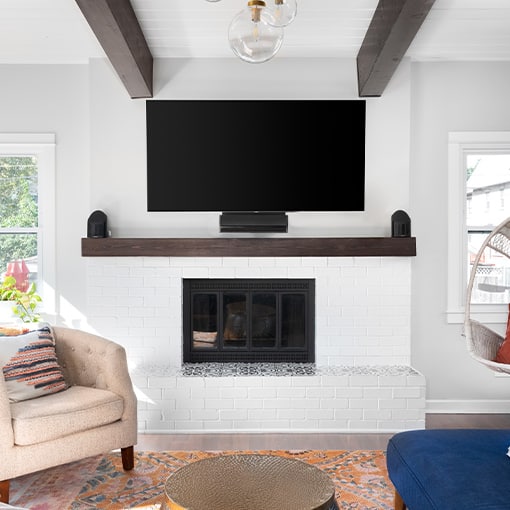
Can I Mount My Tv Above The Fireplace

ᑕ❶ᑐ What To Consider Before Mounting A Tv Above Fireplace

Putting A Tv Above Your Mantel Summer Adams

Putting A Tv Above Your Mantel Summer Adams
Related Posts

